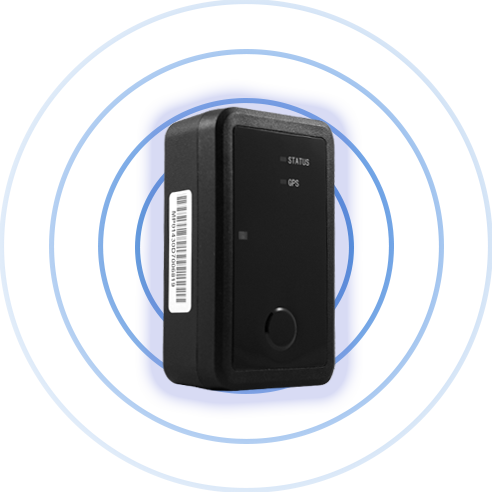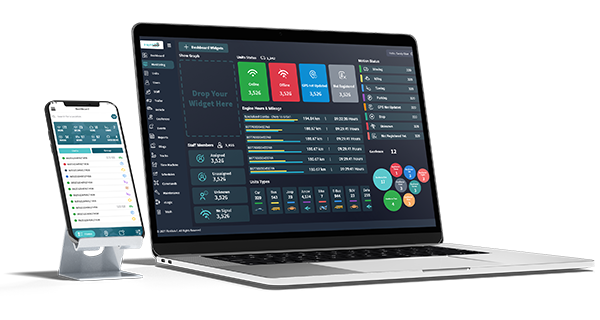Knowing where your assets are at any given moment is no longer a luxury, it's a necessity for businesses large and small.
Real-time GPS asset tracking is revolutionizing industries by providing instant, automated location data for vehicles, equipment, and other valuable assets.
This technology empowers businesses to streamline operations, reduce costs, and gain a competitive edge.

In today's competitive business landscape,
the ability to monitor and manage assets in real-time is becoming increasingly crucial.
Companies are recognizing that real-time asset tracking is not just a convenience, but a strategic advantage.
GPS asset tracking utilizes satellite technology to pinpoint the exact location of assets, transmitting this information to a centralized platform for instant
viewing and analysis. By harnessing the power of this technology, businesses can significantly improve operational efficiency,
minimize losses due to theft or misplacement, and gain valuable insights into asset utilization.
GPS Asset Tracking Introduction
What Is GPS Asset Tracking
GPS asset tracking is a technology that uses the Global Positioning System (GPS) to monitor the location and movement of assets in real time.
This is achieved through a combination of hardware devices (GPS trackers) attached to the assets,
and software platforms that process and display the location data.
GPS trackers use satellite signals to determine the precise geographical coordinates of an asset, which are then transmitted to a central server.
The software on the server processes data, and produces human readable reports and maps showing real time assets location.
A GPS system allows businesses to track the whereabouts of their assets at any given moment,
providing valuable insights for improving efficiency, security, and decision-making.
How GPS Asset Tracking Systems Work
GPS asset tracking systems function through a seamless integration of hardware,
software, and communication networks.
GPS Tracking Device
A small, durable GPS tracking device is attached or embedded within the asset.
This device is equipped with a GPS receiver that captures signals from multiple GPS satellites orbiting the Earth.
Satellite Triangulation
By analyzing the signals from at least three GPS satellites, the tracker calculates its precise location using a process called trilateration.
Data Transmission
The GPS tracker transmits the location data to a central server.
Based on this data, processing software can estimate other parameters, such as speed and movement direction of a trackable asset.
GPS trackers can also include sensors (e.g., temperature, impact) - if they do, sensor data are transmitted along with the geographic coordinates.
This transmission is typically done over cellular or satellite networks.
Data Processing and Storage
The central server receives the data from multiple trackers and processes it.
This often involves filtering out inaccurate readings, applying algorithms for smoothing or interpolation, and storing the data in a database for
reports and historical analysis.
User Interface
Users can access the location data and other relevant information through a web-based platform or mobile app.
This interface typically displays a map with real-time locations of assets, historical movement tracks, and various reports and analytics.
Alerts and Notifications
Many GPS asset tracking systems offer customizable alerts and notifications based on predefined events or triggers.
For example, users can receive alerts if an asset leaves a designated area (geofencing),
if it exceeds a certain speed limit, or if the battery of the tracker is low.
Real-Time Tracking and Historical Data
Users can view the current location of assets in real time, as well as access historical movement data to analyze patterns,
optimize routes, and identify potential issues.
What Kind Of Assets You Can Track Using GPS Technology
GPS tracking is commonly used on the large, valuable assets that are located outside and are constantly on the move.
Some examples are:
- Vehicles Cars, trucks, vans, trailers, and even boats can be tracked to optimize routing, monitor driver behavior, and prevent theft.
- Heavy Construction Equipment Bulldozers, excavators, cranes, and other machinery can be tracked to improve utilization, prevent unauthorized use,
and streamline maintenance schedules.
- Shipping Containers can be equipped with battery-powered GPS trackers to give you real time location, movement speed and estimate of arrival.
What Kind Of Assets Cannot Be Tracked Using GPS Technology
While GPS technology offers immense versatility in asset tracking, it is not suitable for all asset types. It would be unwise, or impossible to use GPS technology
for the following assets / scenarios:
- Assets in Areas Without GPS Signal GPS relies on signals from satellites, so assets located in areas with poor or no satellite reception
(e.g., deep inside buildings, underground tunnels, remote wilderness areas) may not be trackable in real time.
- Small Equipment And Tools It is impractical to track small tools and equipment with traditional GPS devices due to their size and system cost.
Alternative tracking technologies like RFID or
Bluetooth low energy (BLE)
may be more suitable in these cases.
- Assets That Are Hidden or Obstructed
If a GPS tracker is hidden or obstructed by materials that block GPS signals (e.g., metal containers, dense foliage),
its ability to transmit location data may be compromised.
It's important to assess the specific characteristics and operational environment of your assets to determine if GPS tracking is the most suitable solution.
Benefits of GPS Asset Tracking
GPS asset tracking offers a multitude of benefits for businesses across various industries, enhancing efficiency, security, and overall operational performance.
Real-Time Assets Visibility
The most obvious and perhaps most valuable benefit is the ability to see the precise location of assets in real time.
This eliminates guesswork, reduces time wasted searching for misplaced items, and enables quicker response times in case of emergencies or theft.
Improved Asset Utilization
By tracking how assets are being used, businesses can identify underutilized equipment, optimize deployment strategies,
and make informed decisions about purchasing or leasing additional assets.
Enhanced Security and Theft Prevention
GPS tracking acts as a powerful deterrent against theft, as thieves are aware that the asset can be easily located.
In the event of theft, the ability to track the asset's movements significantly increases the chances of recovery.
Geofencing features can also trigger alerts if an asset leaves a designated area, providing an early warning system.
Optimized Routing and Dispatching
For businesses that manage fleets of vehicles or mobile equipment, GPS tracking enables optimized routing based on real-time traffic conditions,
reducing fuel consumption and travel time.
Dispatchers can also quickly locate the nearest available asset to respond to customer requests or emergencies.
Increased Accountability and Productivity
By tracking asset usage businesses can promote accountability, identify areas for improvement, and reduce unauthorized use of company resources.
This can lead to increased productivity and cost savings.
Improved Customer Service
Real-time tracking allows businesses to provide accurate ETAs for deliveries or service calls, enhancing customer satisfaction and building trust.
Data-Driven Decision Making
The vast amount of data generated by GPS tracking systems can be analyzed to uncover patterns, trends, and inefficiencies.
This valuable information can be used to make data-driven decisions that improve operational processes and boost overall performance.
GPS Asset Tracking System Components
GPS asset tracking systems rely on two key components:
GPS trackers physically attached to the assets, and a software system that receives, processes, and analyzes data transmitted by those trackers.

GPS Trackers
GPS trackers are the fundamental hardware component of the GPS asset tracking system.
These compact devices, equipped with cellular or satellite communication capabilities, are attached or embedded within the assets themselves.
GPS trackers continuously receive signals from satellites, allowing them to determine their precise location.
This location data is then transmitted to a cloud software for processing and analysis.
GPS trackers come in various shapes, sizes, and functionalities to cater to different asset types and tracking needs. Some common types include:
- Battery-Powered Trackers These are ideal for non-powered assets and offer flexibility in installation.
Battery life varies depending on usage and configuration.
- Hardwired Trackers These are typically used for vehicles and powered assets, drawing power directly from the asset's battery.
- OBD-II Trackers These plug into a vehicle's OBD-II port and can provide additional diagnostic data along with location information.
- Asset-Specific Trackers These are designed for specific asset types, such as trailers or containers, and may offer specialized features
like tamper detection or temperature monitoring.
When choosing a GPS tracker, it's important to consider factors such as battery life, durability, communication capabilities, and
any additional features that might be relevant to your specific asset tracking needs.

GPS Tracking Software
Beyond the hardware components,
the true power of GPS asset tracking system lies in the software. Software manages and interprets the data received from GPS trackers.
Software platform provides a centralized hub for monitoring assets, analyzing their movements, and generating actionable insights.
Key Features Of The GPS Asset Tracking Software
Look for the following key features in the GPS asset tracking system:
- Real-Time Tracking The ability to view the live location of assets on a map, often with customizable refresh rates.
- Historical Data Review past movements and routes of assets to identify patterns and trends.
- Geofencing Create virtual boundaries on a map and receive alerts when an asset enters or exits these designated areas.
- Alerts and Notifications Set up customizable alerts for various events, such as speeding, unauthorized movement, or low battery on a tracker.
- Reports and Analytics Generate detailed reports on asset utilization, travel time, and other key metrics.
- Integration with Other Systems Many GPS tracking platforms offer integration with other business systems like CRM, ERP, or telematics solutions,
allowing for a more holistic view of operations.
- Mobile Accessibility Access the tracking platform and data from smartphones or tablets, enabling on-the-go monitoring and management.
- Customization and Scalability The ability to tailor the software to specific business needs and scale it as the number of tracked assets grows.
- Security and Data Protection Robust security measures to ensure the confidentiality and integrity of sensitive location data.
Real World Applications Of GPS Asset Tracking
The versatility of GPS asset tracking makes it applicable across a wide range of industries,
solving real-world challenges and driving significant improvements. These are just a few examples of how GPS asset tracking is being used
to streamline operations, improve safety, and boost profitability in diverse
industries.
- Construction and Equipment Rental Track the location and utilization of heavy machinery, prevent theft.
- Logistics and Transportation Monitor shipments in real time, optimize routes for efficiency, and ensure timely delivery.
- Oil and Gas Track the location of equipment in remote locations.
- Vehicle Fleet Tracking Monitor the real-time location, speed, and driving behavior of vehicles to optimize routes, reduce fuel consumption, and
improve driver safety.
- Agriculture Monitor livestock movements, optimize grazing patterns, and prevent theft.
As technology continues to evolve, we can expect even more innovative applications to emerge, further solidifying GPS asset tracking as an indispensable
tool for businesses and organizations.
Harnessing the Power of GPS Asset Tracking: A Guide to Successful Implementation
The decision to implement a GPS asset tracking system is a significant step towards optimizing your business operations,
enhancing security, and gaining valuable insights into your assets.
However, successful implementation requires careful planning and consideration. Here are some key tips to guide you through the process.
Clearly Define Your Objectives
Before diving into the world of GPS asset tracking, take the time to clearly define your goals.
What specific problems are you trying to solve? Are you looking to reduce theft, improve fleet management, optimize resource utilization,
or enhance customer service? Having a clear understanding of your objectives will help you choose the right system and features.
Assess Your Asset Types and Tracking Needs
Not all assets are created equal, and neither are GPS trackers. Consider the types of assets you need to track (vehicles, equipment, non-powered assets, etc.)
and their specific requirements. Do you need real-time tracking, geofencing capabilities, or specialized sensors?
Understanding your asset characteristics will help you select the most suitable tracking devices and software features.
Choose the Right GPS Tracking System Provider
Research different providers and compare their offerings. Look for a provider with a proven track record, a robust platform, reliable customer support,
and features that align with your specific needs. Consider scalability as well, in case your tracking needs expand in the future.
Develop a Comprehensive Implementation Plan
Implementing a GPS asset tracking system involves more than just installing devices.
Develop a detailed plan that outlines timelines, responsibilities, training requirements, and communication strategies.
Involve key stakeholders from different departments to ensure a smooth rollout.
Train Your Staff
Proper training is essential for maximizing the benefits of your GPS asset tracking system.
Ensure that all relevant employees, from drivers and field technicians to managers and dispatchers, understand how to use the system
effectively and interpret the data it provides.
Monitor and Analyze Data
The real value of GPS asset tracking lies in the data it generates.
Regularly monitor the data, analyze trends, and use the insights to make informed decisions about resource allocation,
route optimization, and other operational aspects.
Continuously Evaluate and Refine
GPS asset tracking is not a one-time implementation. Continuously evaluate the system's performance, gather feedback from users,
and make adjustments as needed. Technology evolves rapidly, so be prepared to adapt and upgrade your system to stay ahead of the curve.
Conclusions
GPS asset tracking is a transformative technology that empowers businesses to gain real-time visibility and control over their valuable assets.
By leveraging the capabilities of GPS trackers and software systems,
companies can optimize operations, enhance security, reduce costs, and make data-driven decisions that improve their bottom line.
Whether you're managing a fleet of vehicles, tracking expensive equipment, or monitoring the movement of valuable inventory,
GPS asset tracking offers a versatile and powerful solution for modern business challenges.
By carefully planning your implementation and choosing the right technology partner, you can unlock the full potential of GPS
asset tracking and drive your business forward.

